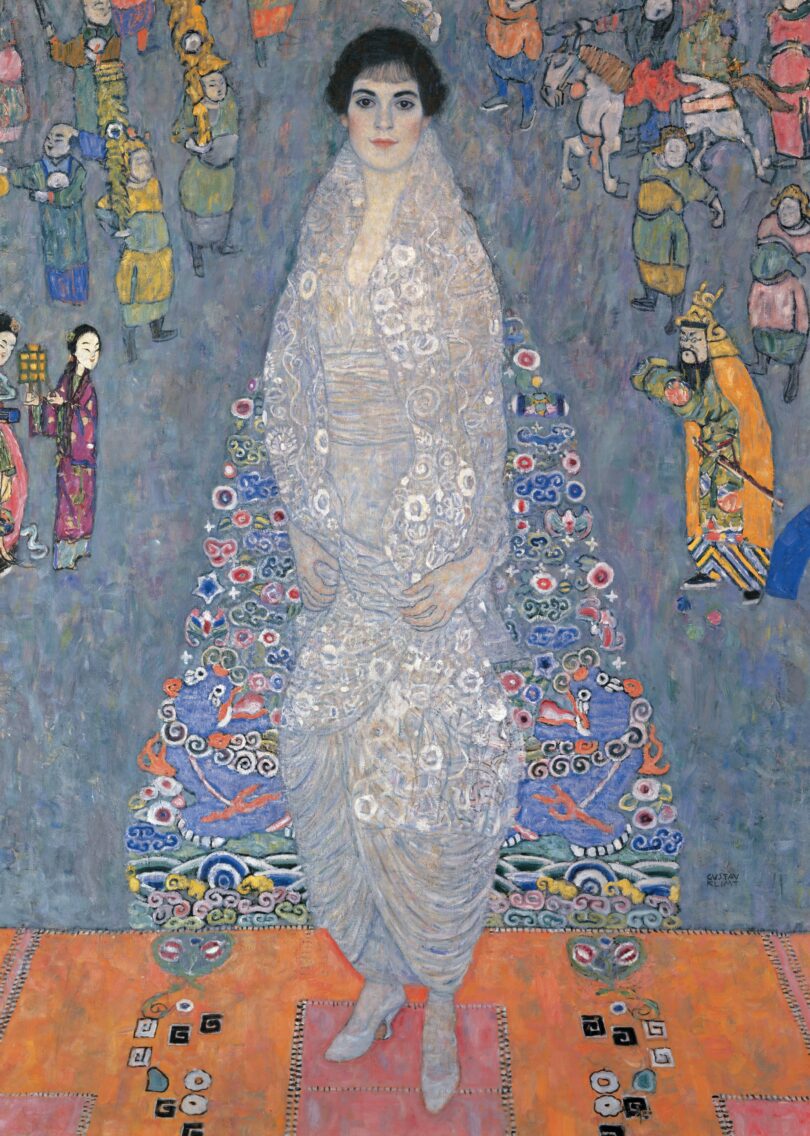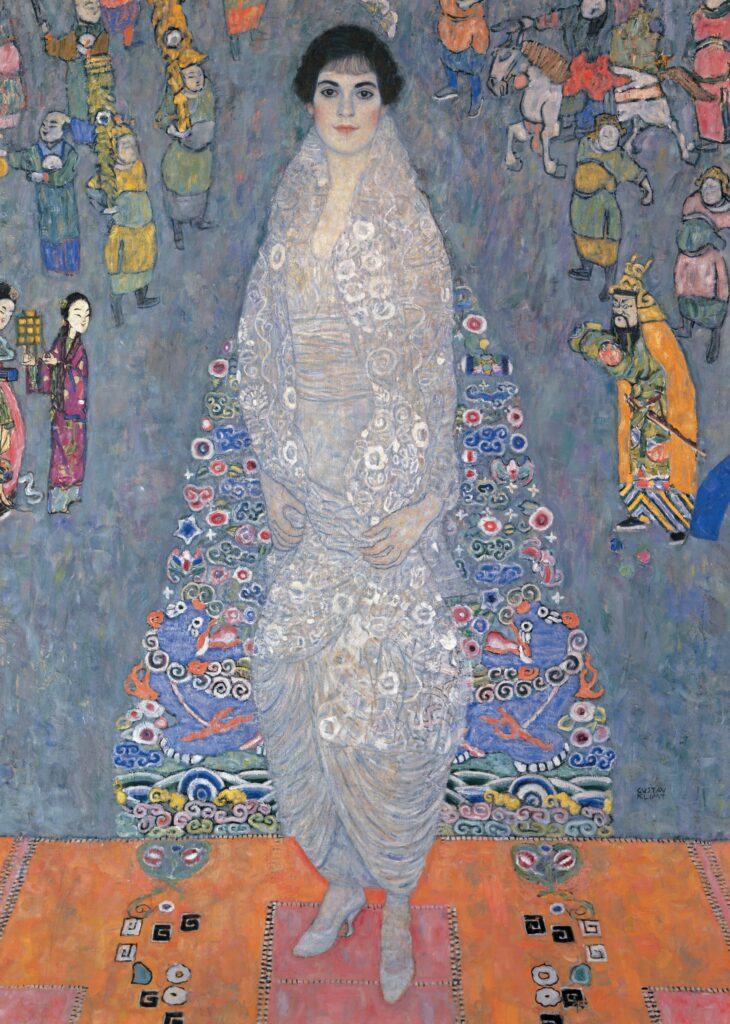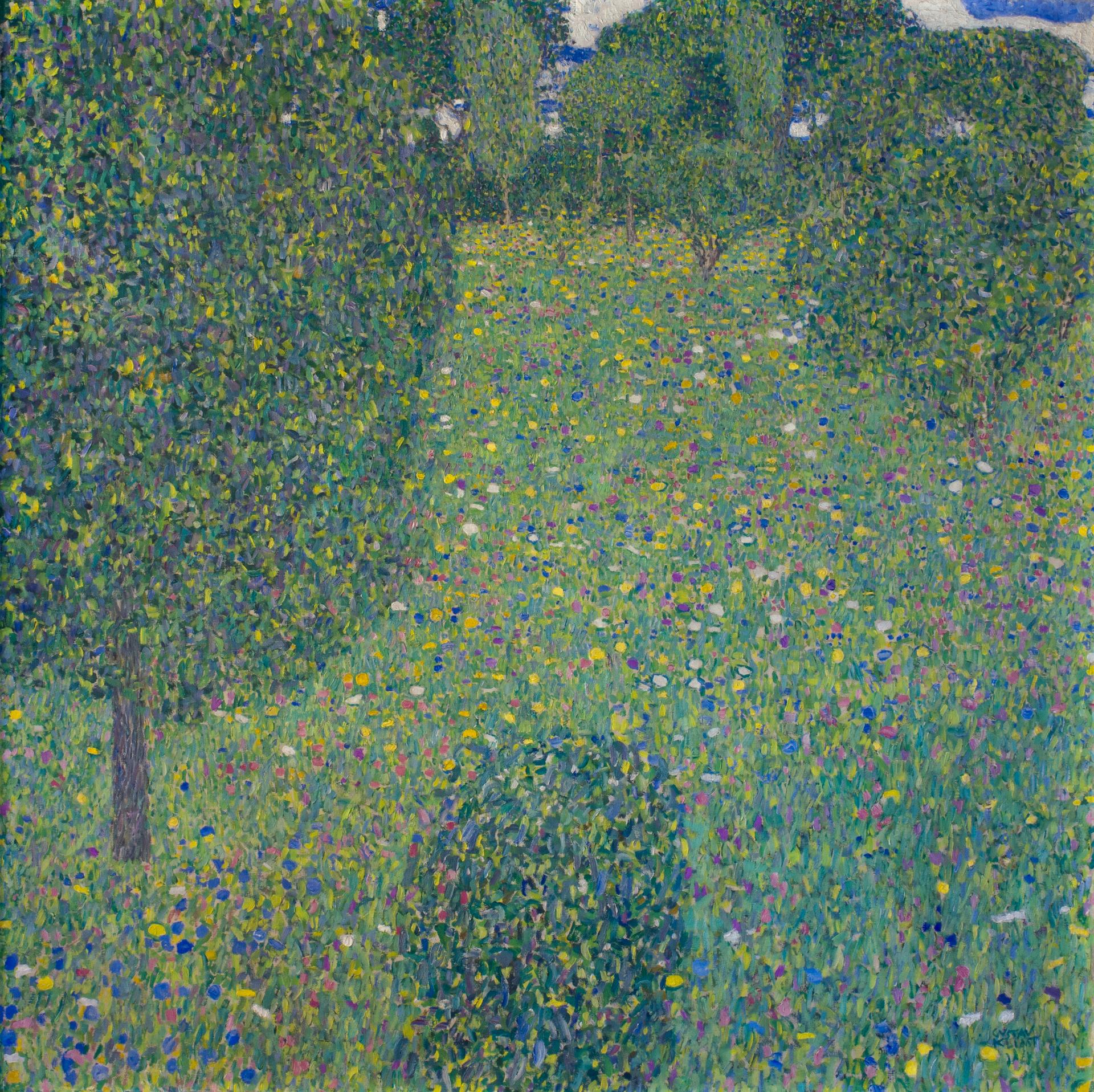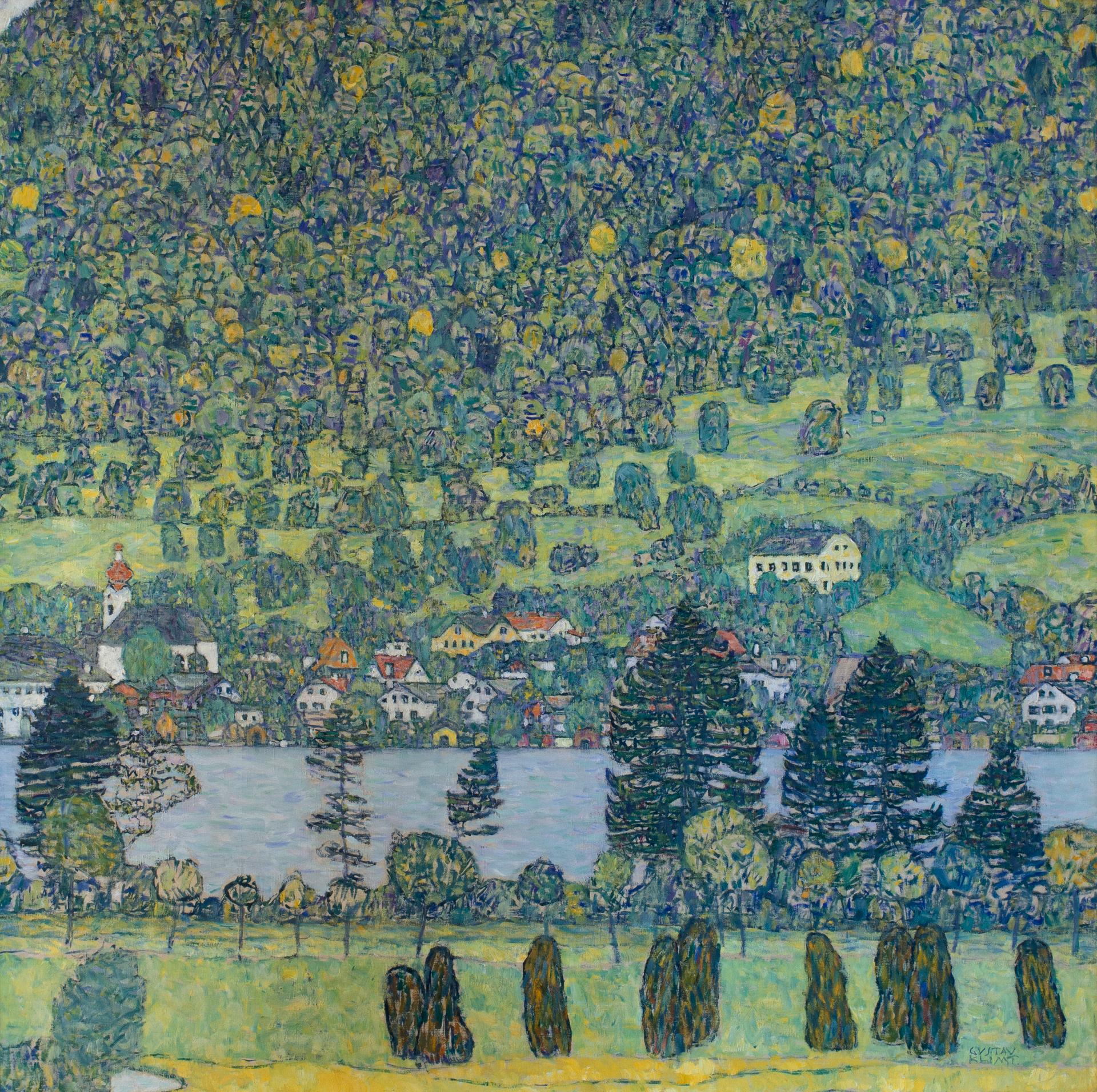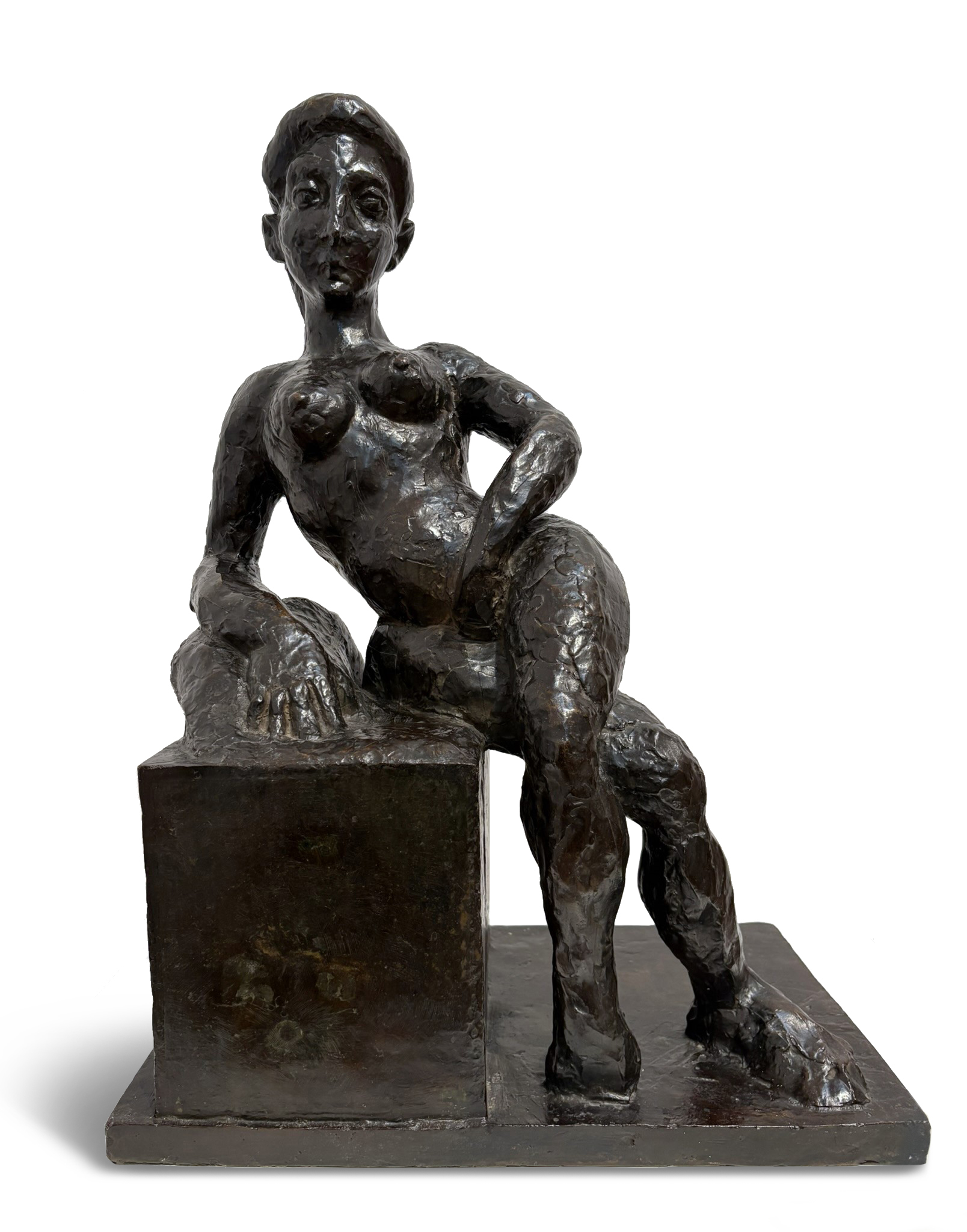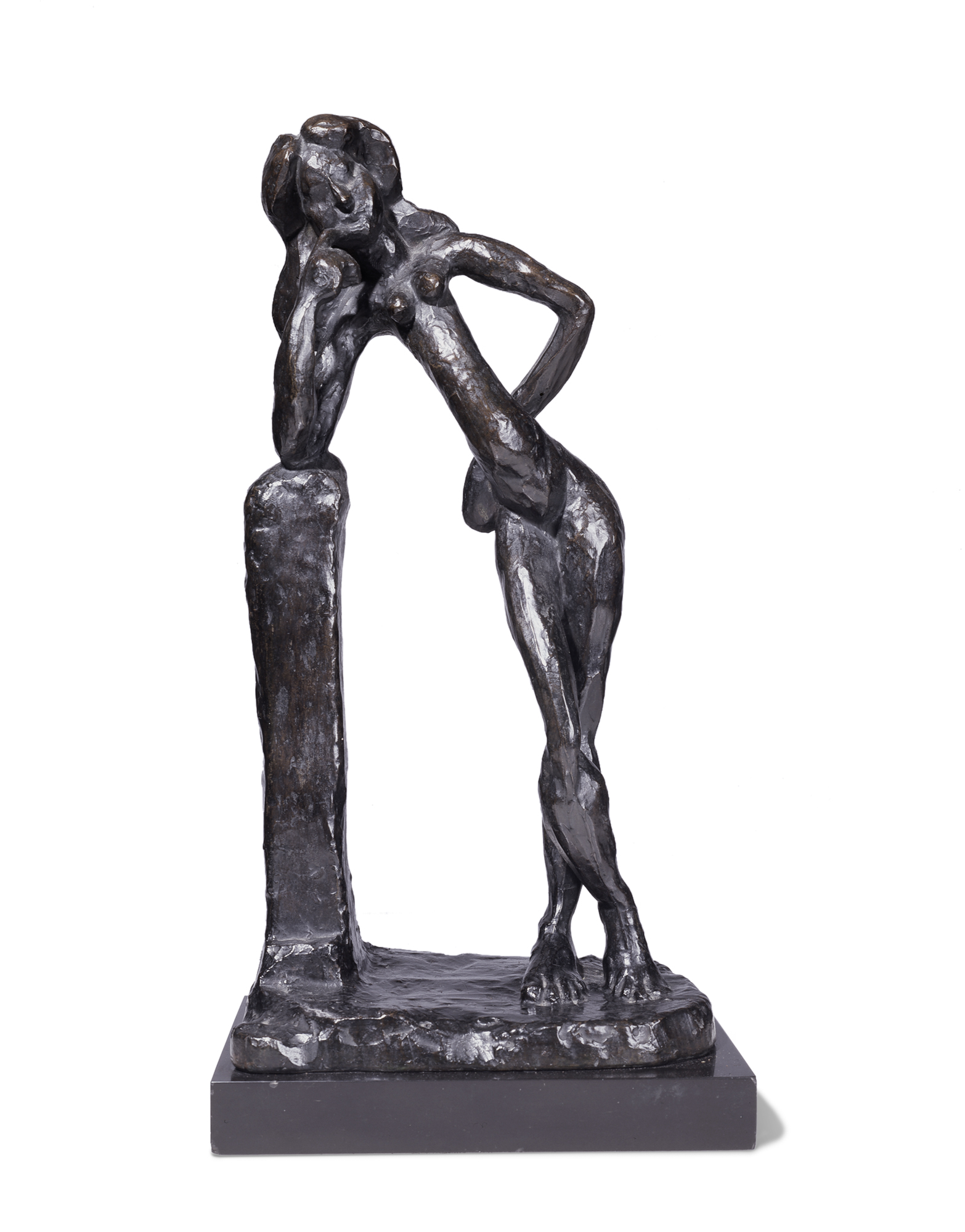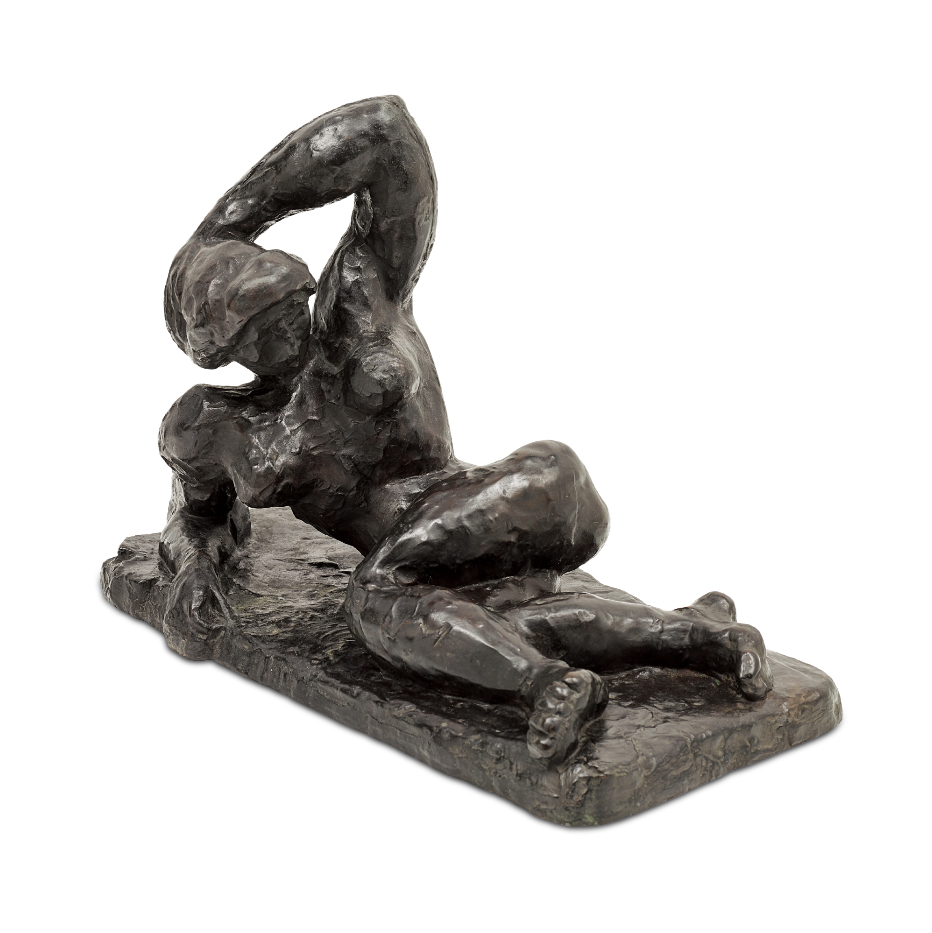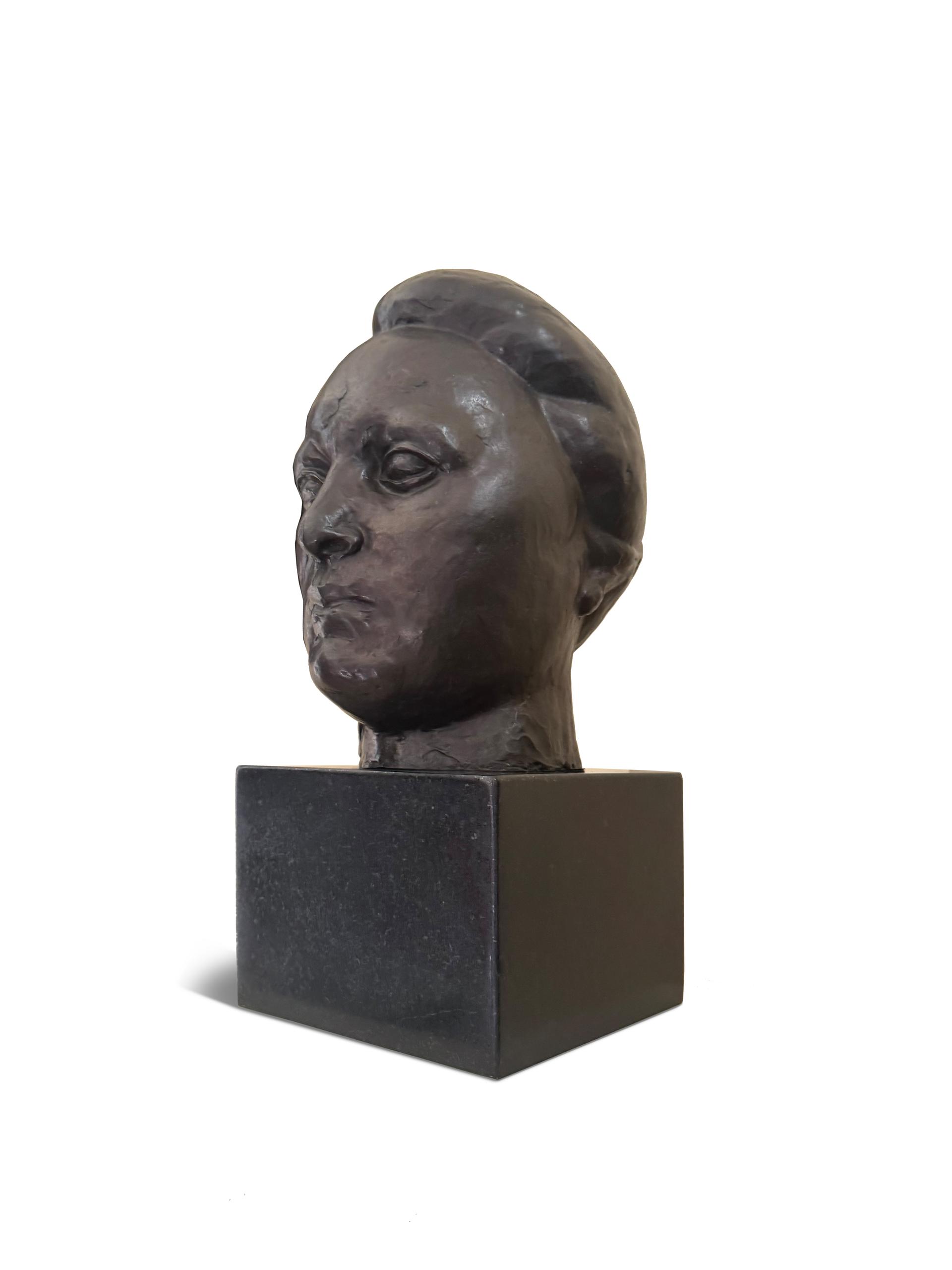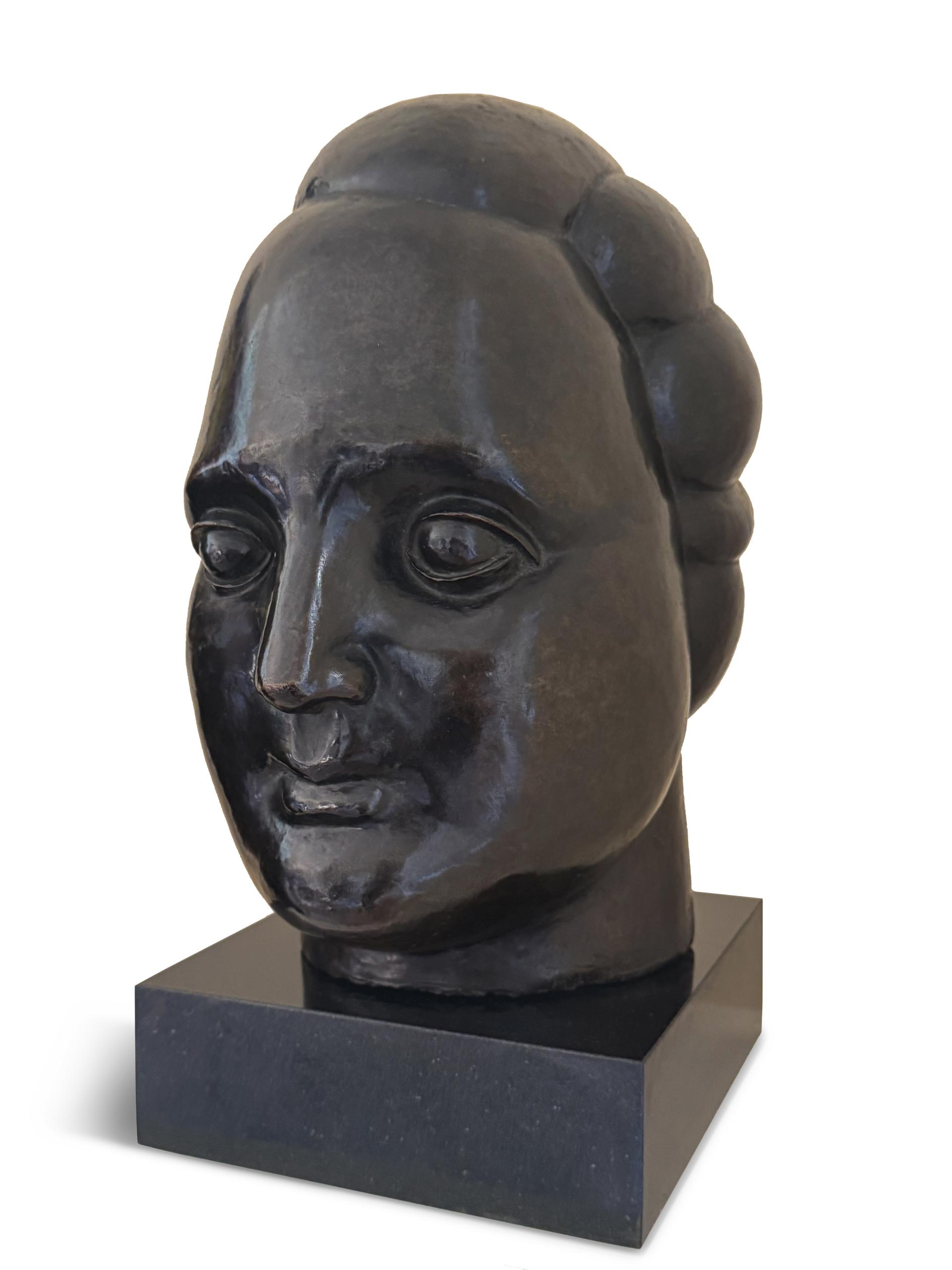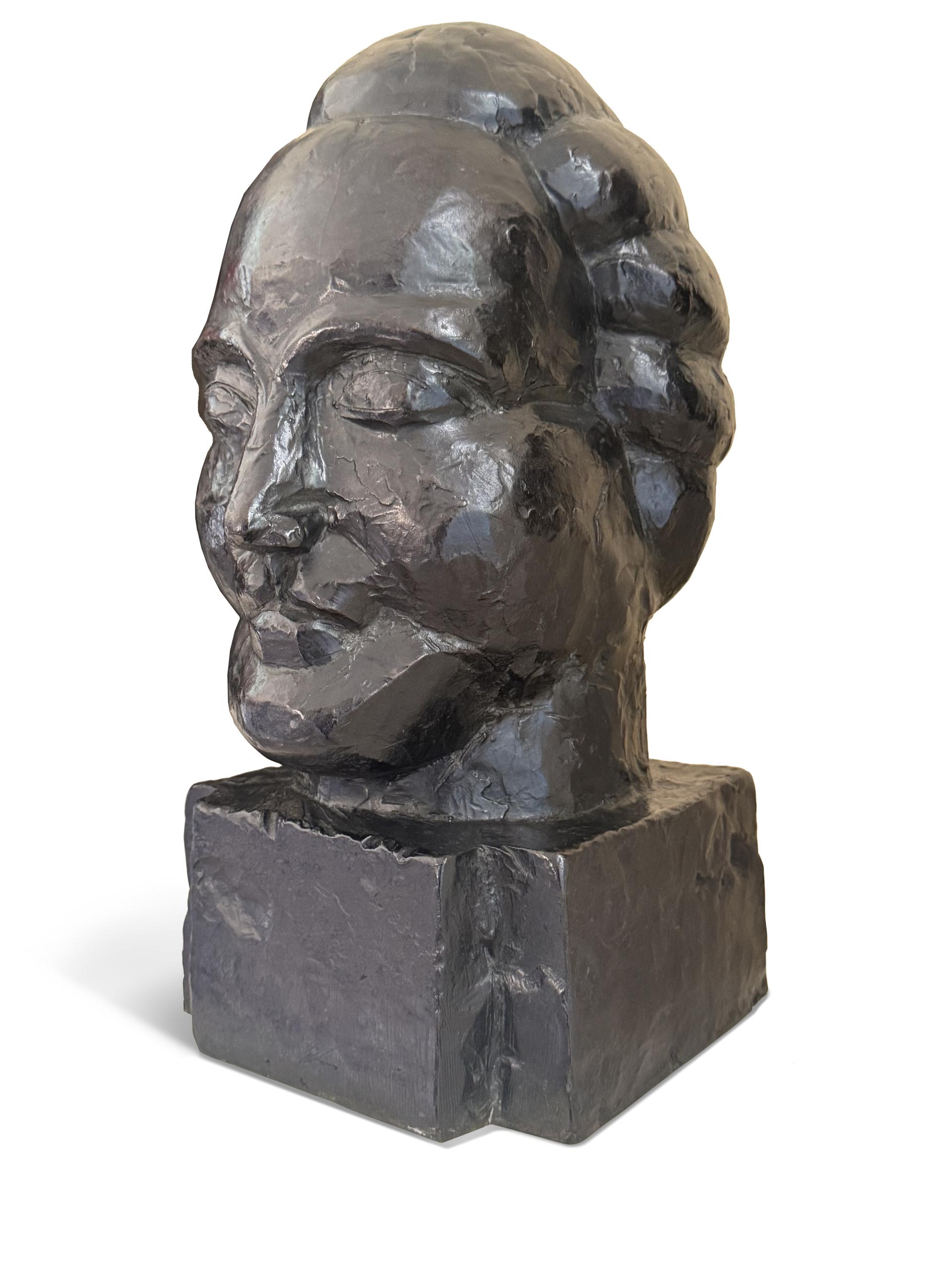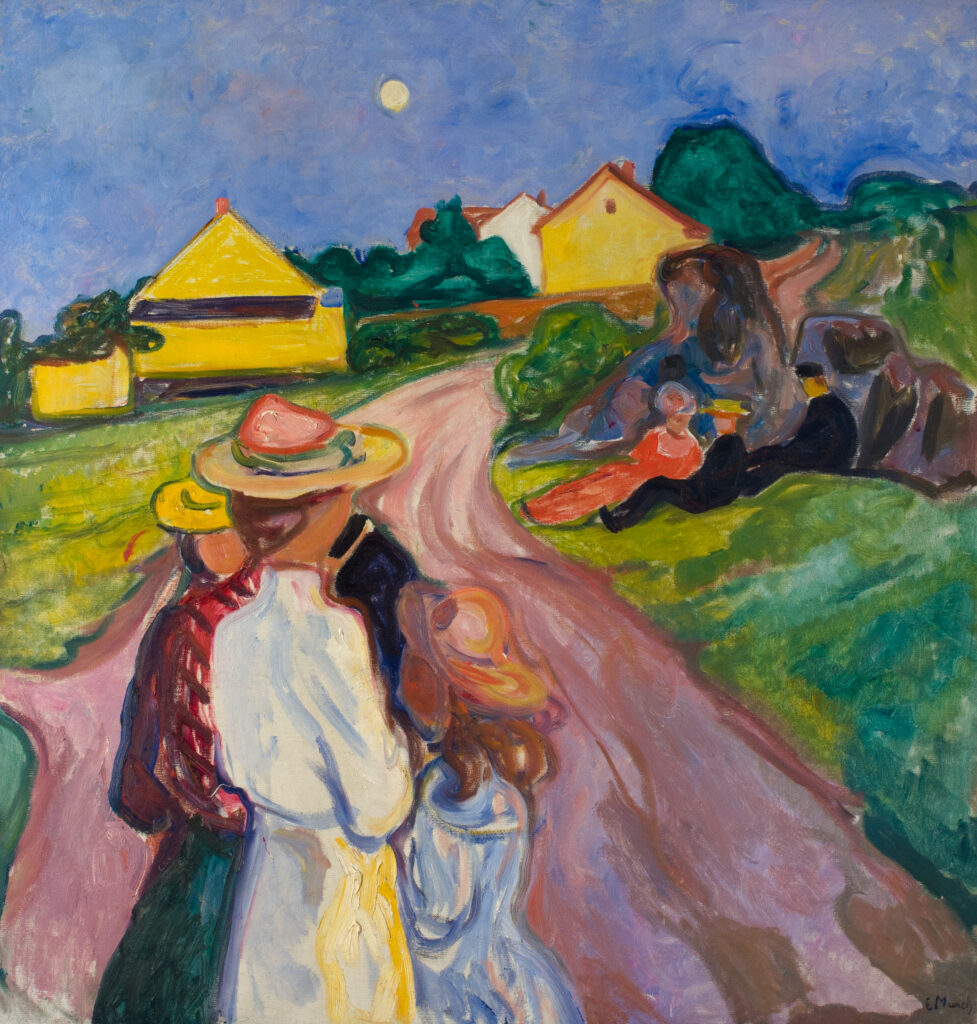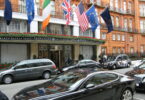NEW YORK, SEPTEMBER 15, 2025 — This fall in New York, Sotheby’s will offer The Leonard A. Lauder Collection, a once-in-a-generation collection of 20th-century masterpieces that personifies the lifelong connoisseurship of one of the greatest collectors and benefactors of the arts in America. The sale will launch Sotheby’s new global headquarters: the historic Breuer Building on Madison Avenue, a cultural landmark of New York.
The core of the collection will be offered in a standalone 24-lot evening sale on 18 November – expected to realize in excess of $400 million – led by one of the finest and most intricately conceived of the celebrated full-length portraits Klimt created during Vienna’s early 20th century Golden Age. Depicting the young Elisabeth Lederer, the daughter of Klimt’s greatest patrons, the painting has never before appeared on the open market. It will now be offered with an estimate in excess of $150 million.
Complementing the portrait are two signature square-format landscape paintings of Attersee, Klimt’s beloved summer retreat: Blumenwiese (estimate in excess of $80 million), a jewel-like mosaic of wildflowers from 1908, and Waldhag bei Unterach am Attersee of 1916(estimate in excess of $70 million), painted with the broader, lyrical touch of Klimt’s mature style. These works, too, have never before been publicly offered.
Also unprecedented is the offering of six iconic sculptures by Henri Matisse. Major works by Edvard Munch, Pablo Picasso, Agnes Martin, Claes Oldenberg and Coosje van Bruggen, among others, reveal the full sweep of Mr. Lauder’s peerless eye. This exceptional collection, to be unveiled for the first time at Sotheby’s this fall, shines a new light on the full breadth of Mr. Lauder’s far-ranging connoisseurship.
|
The Lauder Legacy
The influence of Leonard A. Lauder – Chairman Emeritus of The Estée Lauder Companies – extends far beyond the beauty industry. One of the art world’s most passionate and influential collectors, philanthropists, and civic leaders for more than half a century, Lauder’s first significant art purchase – a late collage by the German Dadaist Kurt Schwitters – was acquired at Sotheby’s Parke Bernet in 1966. Over the following decades he built the world’s finest private collection of Cubist art. His landmark gift of 89 seminal Cubist works to The Metropolitan Museum of Art transformed the museum’s modern holdings. At the Whitney Museum of American Art, where he served as chairman, he is regarded as the institution’s greatest champion. In 2008, his record $131 million gift – the largest single donation in the Whitney’s history – underpinned the museum’s move to its downtown home. He also donated and helped the museum acquire hundreds of works for its collection.
“A towering figure in the worlds of art, philanthropy and business, Leonard A. Lauder will long be remembered as an extraordinary art patron with a passion for collecting across artistic periods, mediums and genres, and for transforming the Whitney and Metropolitan Museums with his vision and generosity. We are honored to be entrusted with his exceptional collection which will captivate collectors worldwide.”
Charles F. Stewart, Sotheby’s Chief Executive Officer
“Leonard Lauder’s legacy as a patron and collector is deeply intertwined with the history of postwar American art. His steadfast support of the Whitney Museum of American Art is echoed in the emphasis on the great American artists of the 1960s in the collection. Led by Agnes Martin’s rare and sensational ‘The Garden’ from 1964, and featuring exceptional works by Kenneth Noland, Robert Rauschenberg, Claes Oldenburg, and Alexander Calder, Lauder’s collection showcases the triumph of American artists in this critical era of art history.”
Lisa Dennison, Sotheby’s Chairman Americas
“To have not just one but three rare superb museum-quality masterpieces by Klimt, none of which has previously been offered on the open market, coming up for sale together represents a truly unique moment. The Portrait of Elizabeth Lederer epitomizes the aesthetic of Vienna’s Golden Age in which youth, beauty, colour and ornament are fused into a stunning Modernist portrait whilst the two exquisite square format landscapes, ‘Blumenwiese’, 1908 and ‘Waldhag bei Unterach am Attersee’ 1916 attest to Klimt’s liberation from the traditional conventions of painting.”
Helena Newman, Chairman of Impressionist & Modern Art Worldwide, Sotheby’s
“Few artists speak to us today with the emotional power of Edvard Munch. ‘Midsummer Night’ embodies the mystical, magical atmosphere of his finest works. We are thrilled to present this rarely-seen painting alongside an exceptional group of Matisse’s ground-breaking sculpture, including his seminal ‘Figure Decorative’.”
Simon Shaw, Senior Advisor, Impressionist & Modern Art, Sotheby’s
“Sculpture holds both a unique and key role in the work of Henri Matisse, with many examples held in museum collections around the world. This is the most important group of Matisse bronzes to come to auction in recent memory. It comprises his most iconic forms including ‘Figure décorative’, ‘La Serpentine’ and ‘Nu couché I (Aurore)’ as well as the full suite of Henriette bronzes, which have never before been available at auction as a complete set.”
Simon Stock, Senior Specialist, Impressionist & Modern Art, Europe & Asia, Sotheby’s
|
A Glimpse Inside the Collection
|
GUSTAV KLIMT
Porträt der Elisabeth Lederer (Portrait of Elisabeth Lederer)
Oil on canvas
Executed in 1914-16.
Estimate in excess of $150 million
Gustav Klimt’s Porträt der Elisabeth Lederer (Portrait of Elisabeth Lederer) is a masterpiece by Klimt and its appearance at auction represents a once in a generation opportunity to buy one of the most famous and admired of all the Viennese artist’s celebrated paintings of women. Fully completed, full-length society portraits of this impressive scale and from this important 1912-1917 period, which are widely considered the most desirable, are extremely rare to the market with the majority in major Museum collections. This one of only two such portraits remaining in private hands.
Both the daughter of Klimt’s great patrons and herself a fervent admirer of the artist, the 20-year-old Elisabeth Lederer is shown in the full bloom of her youth, dressed in the height of Poiret-inspired modern Viennese fashion against a background infused with East Asian motifs, reflecting Klimt’s passion for Chinese and Japanese artefacts and textiles. A painterly fusion of youthful femininity and cosmopolitan elegance, of Viennese style and the exoticism of the East, the painting epitomises Klimt’s mastery of colour and pattern.
Elisabeth Franziska Lederer was the daughter of industrialist August Lederer and his wife Serena Lederer, née Pulitzer, who, since the early 1890s had quickly established themselves as the most illustrious and important of Klimt’s patrons. In the wake of a dispute with the artistic establishment that had threatened his career, it was they who came to the Klimt’s rescue, amassing what swiftly became the largest and most important collection of Klimt’s work anywhere. As early as 1892 Klimt had painted Serena Lederer – a portrait that now hangs in the Metropolitan Museum of Art in New York – and later Serena was able to commission from him a portrait of her mother, Charlotte Pulitzer, as well as the present painting of her daughter Elisabeth. Elisabeth Lederer had therefore known Klimt all her life and affectionately referred to him as “Uncle”.
Work on the portrait appears to have continued for almost three years, with Klimt, as was increasingly characteristic during these later years, seemingly never satisfied. “Months passed making drawings in various positions,” Elisabeth recalled. “Uncle [Klimt] cursed and swore; it was a real pleasure to listen to him. Several times, he threw the pencil away and said that one should never paint people who are too close.” The project could have lasted even longer but eventually, as Elisabeth described, her mother lost patience, “…seized the picture, loaded it onto the car, and kidnapped it.”
The portrait’s serenity stands in stark counterpoint to what would follow: the 1938 Nazi Anschluss. Though Elisabeth Lederer had converted to Protestantism when she married Baron Bachofen von Echt in 1921, in the eyes of the regime, Elisabeth had become Jewish again upon their divorce in the 1930s; thereafter, she frantically sought to escape deportation. To save herself, Elisabeth argued that the non-Jewish, “German-blooded” Klimt had in fact been her father. Such a parentage, made with the knowledge and complicity of her mother Serena (despite it being ruinous to her own reputation) was ultimately believed by the city’s new “Reich’s Department for Genealogical Research” and Elisabeth was permitted to remain in Vienna where she died 1944.
The painting was, however, confiscated by the Zentralstelle für Denkmalschutz in March 1939, and was only restituted to the Lederer heirs after the war in 1946. Later acquired from the family by Serge Sabarsky, an early champion of German and Austrian art in America, the portrait was purchased from him by Mr. Lauder in the mid-1980s.
In June 2023, Sotheby’s set the record for a work at auction by Klimt when Dame mit Fächer (Lady with Fan) sold for $108.8m (£85.3m) in London. Estimated in the region of $150 million, Portrait of Elisabeth Lederer is poised to set a new benchmark for the artist when offered at Sotheby’s this November.
|
GUSTAV KLIMT
Blumenwiese (Blooming Meadow)
Oil on canvas
Executed in 1908
Estimate in excess of $80 million
Gustav Klimt’s landscapes are today widely recognized as among the most important, modern and ground-breaking artistic achievements of the 20th century. Painted by Klimt during one of his long summer sojourns on Lake Attersee in the Salzkammergut region of Austria, Blumenwiese (Blooming Meadow) is a stunning landscape painting made at the high point of Klimt’s career.
Klimt began his series of landscapes in 1897 during the first of many joyful summer visits to the Austrian countryside in the company of Emilie Flöge, his muse, creative companion and lover whose presence in his life inspired some of his most original and effervescent works. She was also the subject of a number of his paintings, including The Kiss.
Created at the height of Klimt’s career, this work reveals the artist’s commitment to exploring the possibilities of paint itself, liberated from academic convention and imbued with a profound sensitivity to nature’s vitality. Painted for his own pleasure rather than on commission, these landscapes are a pure and personal expression of Klimt’s creativity. In parallel with what Claude Monet was doing at the same time, Klimt started using square canvases which, together with the abandoning of traditional conventions of horizon and composition, took landscape painting in a new and exciting direction. Here, the Blooming meadow of the title is depicted as a bejewelled field of sparkling, mosaic-like colour. There is no use of aerial perspective nor the muting of colours as they dissolve into the distance; everything remains fully vibrant and vividly active.
Blumenwiese not only confirms Klimt’s position among the leading figures of Viennese modernism but also anticipates the trajectory of twentieth-century abstraction, underscoring his lasting influence on the evolution of modern art.
The work was likely exhibited in the Austrian pavilion at the first-ever International Exhibition at the Venice Biennale in 1910 and seems to have entered the collection of Hugo and Broncia Koller by 1928. Blumenwiese was later owned by Serge Sabarsky before entering Mr Lauder’s collection in 1985.
Mistakenly confused with another painting of the same subject, this painting was subject to an erroneous restitution claim in 2007. That claim was resolved and the correct painting subsequently restituted by the Musée d’Orsay, Paris, to the heirs of Nora Stiasny, née Zuckerkandl.
|
GUSTAV KLIMT
Waldhag bei Unterach am Attersee (Forest Slope in Unterach on the Attersee)
Oil on canvas
Executed in 1916
Estimate in excess of $70 million
The first painting by Klimt that Mr. Lauder ever bought, Waldhag bei Unterach am Attersee is also believed to be the last surviving landscape the artist ever painted.
Unique among this body of work – depicting not only Unterach and the Attersee, but also views of the landscape on both sides of the Austrian lake – it was painted during Klimt’s final summer stay in Attersee, where he spent the season in a remote forester’s lodge, close to the home of his regular summer companions, the Flöge family.
A defining characteristic of Klimt’s landscapes during his final years was the depiction of the Attersee landscape as a kind of undisturbed idyll – a retreat from the ravages of the modern, then-war-torn, world; an idealised realm far removed from the reality of the times.
With the square format of these landscape paintings, typically on a scale of 110 by 110cm, elements like houses or trees are employed to create harmonious rhythmic patterns. Klimt in fact became so taken with this square format that he began to make use of a square viewfinder on the Attersee to help him seek out suitable motifs to paint.
In Waldhag bei Unterach am Attersee, Klimt distils a lifetime of artistic exploration into a single, unified vision that is at once grounded in the physical reality of the Attersee and elevated into the realm of the ideal. This work has been widely exhibited throughout its history, most recently at the Neue Galerie’s Gustav Klimt: 150th Anniversary Celebration in 2012.
|
The Matisse Bronzes
The collection also includes six bronze sculptures by Henri Matisse, the most important group of bronzes by the artist to come to auction in a generation. Together they are expected to realise in the region $30 million.
|
HENRI MATISSE
Figure décorative
Bronze
Conceived in Paris in August 1908 and cast in 1950.
One of the most important sculptures in Matisse’s oeuvre, Figure décorative stands among the limited yet critical body of three-dimensional works which not only informed the artist’s painting practice, but also helped define Matisse as an artist.
Travelling to Algeria in 1906 and to Italy the following year exposed Matisse to the bold patterns of Islamic art and the distilled lines of African sculpture, as well as stylized figuration of proto-Renaissance artists like Giotto and Duccio, leading the artist to an increased attention to structural modelling and the human figure. Whereas earlier bronzes were often modest in scope and exploratory in nature, the scale and composition of Figure décorative conveys Matisse’s increasingly ambitious attitude at the end of the decade.
With its serene gaze, exaggerated-yet-balanced anatomy, and quietly commanding presence, Figure décorative represents a synthesis of modernist innovation and classical idealism. It is among the earliest and most fully realized examples of Matisse’s vision of the nude as both icon and archetype— a vision that would shape the course of his art for decades to follow.
|
HENRI MATISSE
La Serpentine
Bronze
Conceived in Issy-les-Moulineaux in 1909 and cast in 1951.
The conception of La Serpentine in the autumn of 1909 coincided with one of the most pivotal and ambitious moments of Henri Matisse’s career. Earlier that year, in March, Russian collector Sergei Shchukin wrote to the artist to confirm his commission for two monumental canvases, La Danse and La Musique, destined for his Moscow home. This project represented the largest and most demanding pictorial undertaking the artist had yet attempted, and Matisse spent the following summer in the small town of Cavalière on the Côte d’Azur, painting and sketching the model whom he had hired from Paris. It was amidst this intensive project that Matisse created La Serpentine – a sculpture whose radical reimagining of the human figure would serve as both counterpart to and catalyst for the painterly innovations of Dance II.
Rooted in tradition yet defiantly modern in its abstraction, La Serpentine was first met with deep scepticism and criticism when it was exhibited at New York’s Montross Gallery in 1915, but is now widely recognized as one of Matisse’s most daring and innovative sculptures.
Of the eleven casts of La Serpentine, seven are held in museum collections, including The Museum of Modern Art, New York, the Moderna Museet, Stockholm, and the Hirshhorn Museum and Sculpture Garden, Washington, D.C.
|
HENRI MATISSE
Nu couché I (Aurore)
Conceived in Collioure in 1907 and cast in 1948
The motif of the recumbent female nude—a symbol of sensuality and eroticism since Antiquity—first emerged in Matisse’s oeuvre as the luxuriant, nymphaic figures populating his Fauve masterworks Luxe, calme et volupté of 1904 and Le Bonheur de vivre of 1905-06, serving as evocations of an Arcadian idyl. Embarking upon the clay model for Nu couché I, Matisse would prove as iconoclastic to sculptural tradition as he did to that of painting.
The recumbent form of Nu couché I finds its origins in the allegorical Hellenistic sculpture of the Sleeping Ariadne, further popularized in such Renaissance works as Michelangelo’s Aurora of the Tomb of Lorenzo de Medici at the Basilica di San Lorenzo, Florence. Now working solely from his own imagination rather than a live model, Matisse was liberated to radically reconceive the human form itself. The anatomy of the figure is both distilled to its most elemental parts and expanded to the limits of its structural possibilities. Like his greatest influence in sculpture, Auguste Rodin, Matisse strove not to mimetically reproduce human anatomy, but rather to capture the internal emotional response it elicits.
Other examples of Nu couché I belong to preeminent institutional collections including the Centre Pompidou, Paris; Baltimore Museum of Art; Hirshhorn Museum and Sculpture Garden, Washington, D.C. and the Buffalo Albright-Knox Gallery Art Museum.
|
|
|

